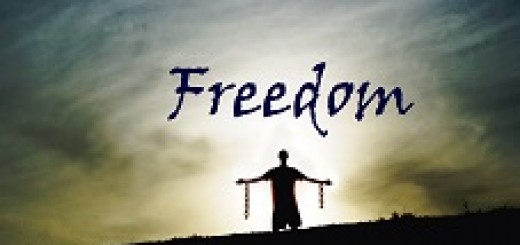By Rabbi David Sterne
This week, we rejoin our sixteenth century sage, the Megaleh Amukot (R’ Nosson Nata Shapira) in a new book of the five books of Moses, in Bamidbar (“In the desert”). As its English name (“Numbers”) suggests, it is a technical, numerically oriented weekly section of the Torah, but nonetheless, R’ Shapira finds some basic questions to ask, along with some interesting answers. Here is one such question regarding the second verse of the parsha (Num 1:2): “Raise the head of the congregation of the entire Jewish people…” R’ Shapira asks, why does the Torah state the word “head” in the singular? There were at least twelve “heads” of the Jewish people, one for each of the tribes…
In answer, R’ Shapira quotes from the Midrash. On the verse, “The sons will replace the fathers…” the Midrash explains that all of human history is condensed into one thousand generations. Furthermore, elsewhere, the Psalms also refers to “one thousand generations.” Regarding the generation of the desert (who are counted in this week’s portion), the Psalms (105) says “the word that was commanded for one thousand generations.” But in this case, the word for “generations” (dor) is missing a letter – it is missing the letter vov that should be in the middle of the word (normally dalet-vov-resh, but here just dalet-resh). The resulting gematria, or numerical value of “for one thousand generations” (le’eleph dor) is equivalent to Moshe (345). This suggests that Moshe himself, as the head of the Jewish people, included the entire generation. That is, as a “general soul,” he included all of the six hundred thousand souls of his generation. And if so, he included within himself all of the Jewish souls for all generations, since the six hundred thousand root souls of his generation further sub-divide into another six hundred thousand “sparks” of souls, (see Tanya). And that is why the verse above is in the singular (rosh – “head”), and not plural (roshei – “heads”) – since there truly is one head of all of the Jewish people, and he is the “Moshe” of the generation. (Ch. 2 of Tanya also points out that the words, Rosh Bnei Yisrael, found in our parsha, carry the acrostic Rebbe, which is what we call our leaders).
Now, every individual of the generation of the desert was on a high enough spiritual level to be considered equivalent to one thousand individuals of subsequent generations. This is what is meant by the previous mentioned verse (Psalms 105) that they were a “word that was commanded for a thousand generations” – that is, each of them was equivalent to one thousand men of other generations. About them, Moshe also said (Deut 1), “God will add to you another thousand like you,” alluding to how the generation of the desert each included one thousand individual Jews who were like them. R’ Shapira goes on to add that Aharon, Moshe’s brother, was also a “general soul” who included in his soul all of the souls of the Jews (which is why when he lit the Menorah in the tabernacle, he was able to elevate and inspire all of the Jewish people). Among the qualities of the 613 mitzvoth is that they each include elements of all the other mitzvoth. The same is true, says R’ Shapira, of every Jew – we all include elements of all other Jews, which is why the sages said, “One who maintains one Jew is as if he maintains an entire universe,” (Talmud Sandhedrin 97).
Finally, R’ Shapira moves on to a very interesting comparison between the events of the desert and Yakov’s dream of the ladder in parshat Vayetzei (in Genesis). As he left his home in Beer Sheva and journeyed to his uncle’s home in Haran, Yaakov stopped on the way and slept on what turned out to be the Temple Mount in Jerusalem. There on the Temple Mount, Yaakov had his dream of the ladder reaching into the heavens, and R’ Shapira draws parallels between his dream and the encampments in the desert. First of all, the largest of the camps in the desert, the camp of Yehuda (to the east), contained 186,000 souls. And 186 happens to be the gematria of the “place” (makom) where Yaakov slept, and where later the holy Temple was built. Upon awakening, he said, “There is Havaya (the four-letter name of God) in this place…” One way of calculating the name of God is by multiplying each letter with itself and adding the subtotals. When we do so with His holy name Havaya, we once more obtain the numerical value of 186 – makom.
Furthermore, upon perceiving the ladder in his dream, Yaakov also knew that there would be four camps of angels at Mt. Sinai. The gematria of sulam (“ladder,” again, without the vov), is the same as Sinai, so Yaakov knew that his dream was an allusion to the events at Mt. Sinai. Moreover, the first four words of this narrative – Vayeitzei Yaakov m’Beer Sheva (“And Yaakov left Beer Sheva”) end with the letters spelling arbah, or “four,” and from this, Yaakov knew that there would be four camps of angels. Moreover, the angels on his ladder moved in a similar manner to the camps at Mt. Sinai. On the ladder, there were “angels of God ascending and descending…” Two angels ascended, and two descended, and above the ladder was the name of God. In the desert, the departure of the clouds above the encampment signalled that it was time for the Jews to travel. First, two camps would travel, and then the Levites who were encamped in the center with the Tabernacle, would depart. Finally the last two camps of Jews would travel, and in this manner the encampment in the desert corresponded to Yaakov’s dream of the ladder on the Temple Mount.
Noticing all this when he awakened from his dream, Yaakov said, “How awesome is this place,” referring to the Temple Mount where he dreamt, but also to the events in the desert. The gematria of “this” (zeh, in Hebrew) is twelve, alluding to the twelve tribes of the desert. And then, he added, “This is none other than the house of God, and this is the gate of heaven.” The second “this” (zeh) alludes to the spiritual source of the tribes above, for they all come from the world of Atzilut as it descends to bria, and there are found twelve alexonim, or connecting lines that conduct the influx of the sefirot to the lower worlds. They are the source of the twelve tribes, and it is to them that Yaakov’s dream alludes, and they of course correspond to the twelve tribes encamped in the desert as well.
Rabbi David Sterne is a prolific author on chassidic thought and has translated many of its seminal works. He resides in Israel and is the director of Jerusalem Connection. To read more of his work and to purchase his books visit http://www.jewishspiritualbook






















